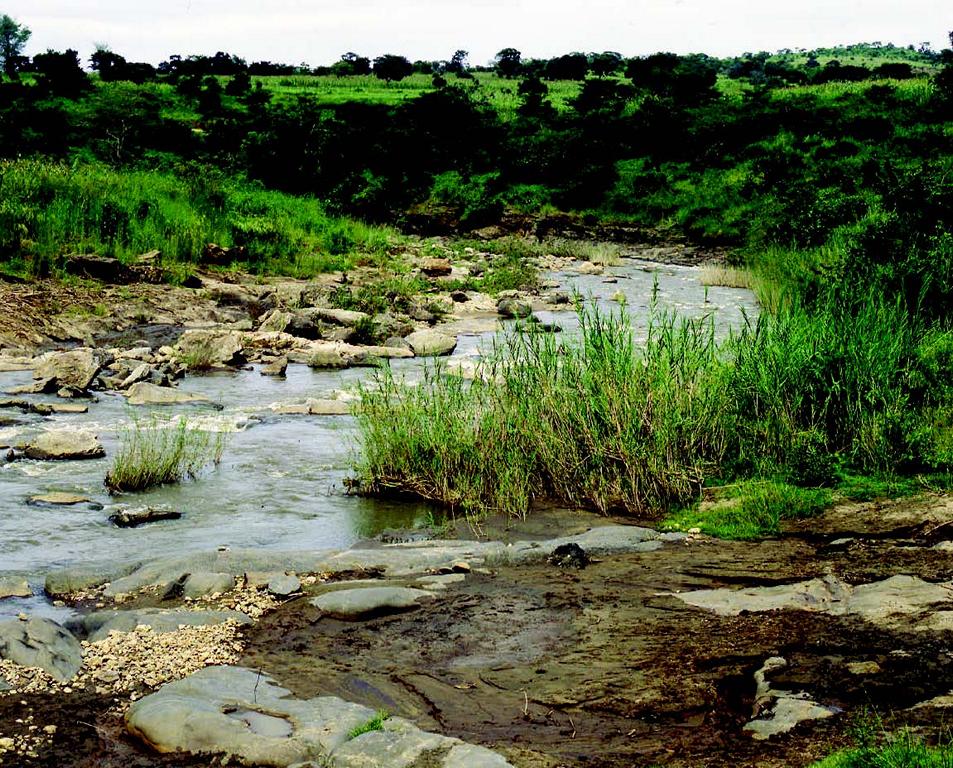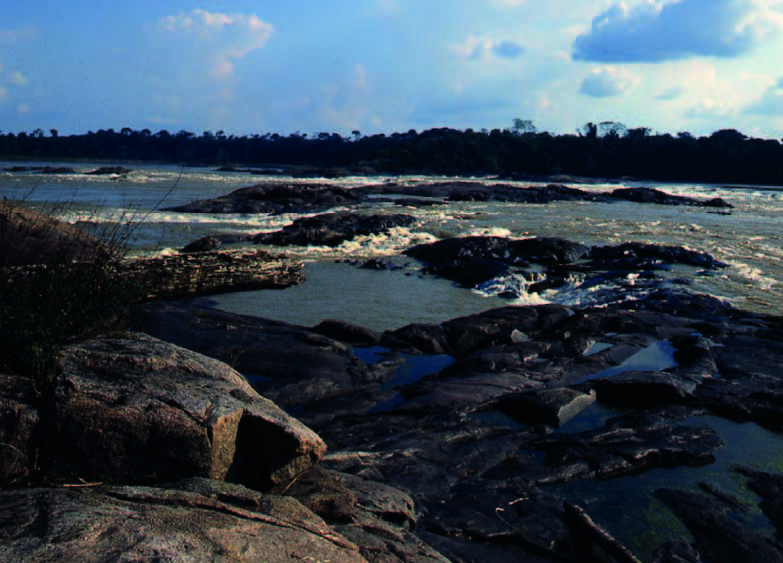In the first part of this series we introduced you to the chemical basis of what is termed the “hardness” of water. If you have misplaced the issue (News 104) and are unable to refer to the article, that is not a major disaster. The printed edition of News 104 is sold out, but you will find all the back issues of the News in PDF form at www.aqualog.de, where they can be downloaded free of charge.
But now back to hardness …

How is hardness measured?
Nowadays this is no big deal. First of all, you can obtain the figures from the water company that supplies you. However, water companies produce drinking rather than aquarium water and sometimes the ladies and gentlemen there can be a bit curt or even churlish when aquarists phone. So it is rather more practical to be able to find out the total and carbonate hardness in the aquarium for yourself.
Very easy: test strips
It is possible to buy test strips, which often even indicate several water parameters simultaneously. They are simply dipped in the water sample to be tested in order to obtain a measurement. These test strips have small test areas that contain chemicals. The coloration of these test areas indicates the result of the measurement – they turn pink, red, blue, or green depending on the test in question. Drop tests are significantly more precise, but test strips are very popular for obtaining a guideline measurement.
Drop tests
The commonest type of test is the drop test. In this case a colored liquid (indicator liquid) is added to a precisely measured water sample and then another liquid (a so-called chelating agent or reagent) is added drop by drop until suddenly the color changes. In the GH Test from JBL, for example, from bright red to bright green. The hardness can be calculated from the number of drops required to bring about the color change, with one drop of reagent usually corresponding to 1°dGH. Drop tests are very simple to perform, requiring only a single vial in which the indicator and reagent can be brought together. But these single-vial tests don’t work very well in very soft water (less than 3° dGH), as the color change takes place almost immediately and is unnoticeable as the indicator doesn’t become brightly colored enough from the addition of just one or two drops of reagent. In such cases you know that you have very soft water, but you don’t know how soft. You then require a test where the indicator and reagent are added to separate vials. The amount of water is simply increased tenfold and ten times the amount of indicator is added, and reagent added drop by drop until the color changes, but this time each drop represents 1/10 of the actual hardness indicated by the reagent. Thus where, for example, one drop of reagent normally represents one degree of hardness, in the diluted water test one drop of reagent represents only 0.1 of a degree. In this way you can make precise measurements in very soft water as well.
Measuring electrical conductivity
Distilled water doesn’t conduct electricity (important warning to all children: DON’T TRY THE FOLLOWING!). Fatal accidents with hair-driers in the bathtub happen only if ions are in solution in the water (see part 1 of this article; not “How can I do away with my spouse” on page 49, but ” What is an ion?” on page 36). Because the total and carbonate hardness are the result of ions in the water, they can be measured indirectly electrically. This involves passing a current through an electrode submerged in the water. The quantity of ions present in the water will affect how well this current is conducted. This conductivity is measures in Microsiemens/centimeter (= µS/cm). Distilled water produces a zero reading as it doesn’t conduct at all. The lower the reading, the softer the water. The conductivity in Lake Malawi measures around 200-260 µS/cm, in typical South American blackwater habitats it is around 20 µS/cm, and in the Rhine at Düsseldorf on 21.11.2012 it was 557 µS/ cm. BUT: the conductivity is a measure of all the ions in solution in the water, ie the total dissolved salts, not just the ions that are responsible for hardness. But all the freshwaters of the world have a rather handy characteristic: the ratio of the dissolved salts they contain is practically the same worldwide, only the overall concentration varies. To put it another way: the same salts are present in the Amazon and in the (unpolluted) Rhine and in Lake Malawi, only in different amounts. So it is normally possible to calculate a good approximation of the hardness from the conductivity. But the whole thing works only in completely fresh water. As soon as common salt (sodium chloride) enters the equation the whole thing falls apart. Sea water contains some 33 g of salts per liter, around 85% of this total is common salt (NaCl), and the water has a conductivity of around 53,000 µS/cm. The little bit of hardness plays no significant role at this scale. But in completely fresh water it can be reckoned that 100 µS/cm is roughly equivalent to 3°dGH.
Measuring electrical conductivity
Distilled water doesn’t conduct electricity (important warning to all children: DON’T TRY THE FOLLOWING!). Fatal accidents with hair-driers in the bathtub happen only if ions are in solution in the water (see part 1 of this article; not “How can I do away with my spouse” on page 49, but ” What is an ion?” on page 36). Because the total and carbonate hardness are the result of ions in the water, they can be measured indirectly electrically. This involves passing a current through an electrode submerged in the water. The quantity of ions present in the water will affect how well this current is conducted. This conductivity is measures in Microsiemens/centimeter (= µS/cm). Distilled water produces a zero reading as it doesn’t conduct at all. The lower the reading, the softer the water. The conductivity in Lake Malawi measures around 200-260 µS/cm, in typical South American blackwater habitats it is around 20 µS/cm, and in the Rhine at Düsseldorf on 21.11.2012 it was 557 µS/ cm. BUT: the conductivity is a measure of all the ions in solution in the water, ie the total dissolved salts, not just the ions that are responsible for hardness. But all the freshwaters of the world have a rather handy characteristic: the ratio of the dissolved salts they contain is practically the same worldwide, only the overall concentration varies. To put it another way: the same salts are present in the Amazon and in the (unpolluted) Rhine and in Lake Malawi, only in different amounts. So it is normally possible to calculate a good approximation of the hardness from the conductivity. But the whole thing works only in completely fresh water. As soon as common salt (sodium chloride) enters the equation the whole thing falls apart. Sea water contains some 33 g of salts per liter, around 85% of this total is common salt (NaCl), and the water has a conductivity of around 53,000 µS/cm. The little bit of hardness plays no significant role at this scale. But in completely fresh water it can be reckoned that 100 µS/cm is roughly equivalent to 3°dGH.

Dirty tricks
Sometimes the results of harness measurement are quite absurd, and we will look at possible causes of this shortly. In the first part of this series it was stated that the non-carbonate hardness has hardly any influence on the aquarium. If one measures the total hardness then in natural waters normally 80% of this will be carbonate hardness. So it is generally sufficient to measure the total hardness and calculate the carbonate hardness from it. But this doesn’t always work. This is usually the result of the way water is treated to make it potable for humans. Because carbonate hardness can be removed by boiling the water, and precipitates out as insoluble “fur” (see part 1). This fur not only looks unsightly, but it also ruins washing and washing-up machine pumps and precipitates out in hot-water pipes, eventually blocking them. So the water is frequently softened. In normal households this is often achieved by so-called ion exchange. This involves the calcium ion of the calcium bicarbonate (reminder: this is what causes the carbonate hardness) being exchanged for a sodium ion. The result is sodium bicarbonate, which isn’t affected by heat and remains dissolved in the water. This may be good for the washing machine, but is far from beneficial in the aquarium. This type of ion-exchange water causes nothing but problems in the aquarium. Moreover the test reagents won’t work in it. The measurement of total hardness measures alkaline earth metal ions, which in practice means mainly calcium; while the measurement of carbonate hardness measures bicarbonate. Because ion exchange removes all the calcium ions but the bicarbonate remains, it suddenly appears that the carbonate hardness is higher than the total hardness, which isn’t the case at all, as the total hardness is ultimately the sum of the non-carbonate hardness and carbonate hardness, and – no matter how good modern water tests are – they can’t be used to measure antimatter. Anyone whose domestic water produces such results has a problem and must look around for suitable aquarium water. If a natural body of water produces such an unusual result then carbonate hardness should be taken as total hardness.
What and how to test?
When you are starting out with water testing and want to understand what is going on in the aquarium, then liquid tests for total and carbonate hardness are the best choice. Ideally you should test the aquarium water before and after a water change, and check out the mains water at the same time. In this way you will get a good picture of what is coming out of the mains and its effect in the aquarium. If all is normal, ie the non-carbonate and carbonate hardness are in the usual ratio of around 20 : 80 % respectively, then subsequently you can omit one of the two tests during routine measurements. Anyone who is constantly mixing water, to lower the hardness for example, and hence has to make frequent measurements, will find a conductivity meter a sensible acquisition in the long term. Anyone who wants to perform a quick test while on the move, be it in natural waters and springs or the tanks of some horrid club member where all is well, without risking causing a riot, will find that strip tests also provide a good initial indication.

Anzeige






